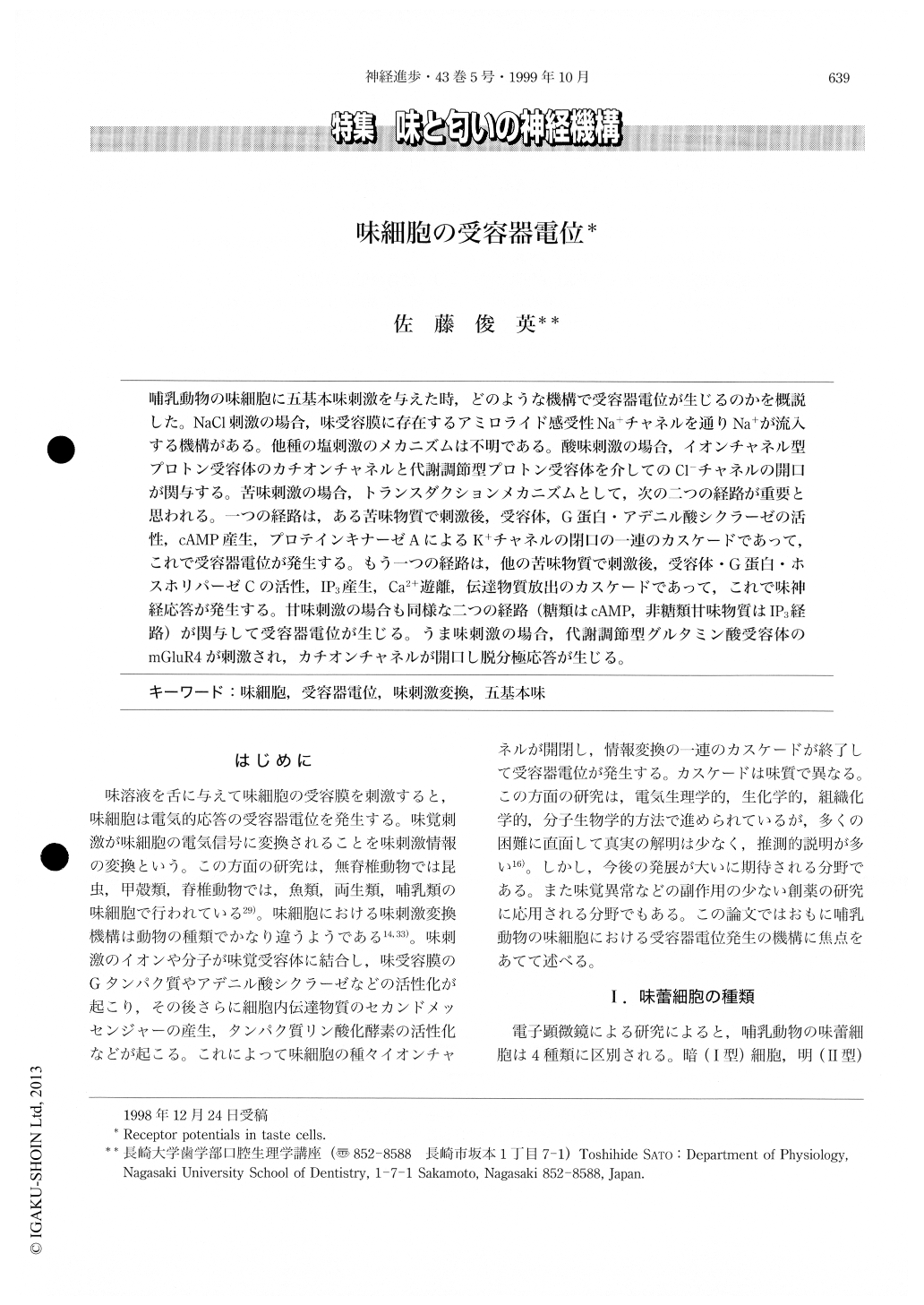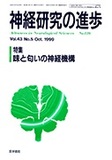Japanese
English
- 有料閲覧
- Abstract 文献概要
- 1ページ目 Look Inside
哺乳動物の味細胞に五基本味刺激を与えた時,どのような機構で受容器電位が生じるのかを概説した。NaCl刺激の場合,味受容膜に存在するアミロライド感受性Na+チャネルを通りNa+が流入する機構がある。他種の塩刺激のメカニズムは不明である。酸味刺激の場合,イオンチャネル型プロトン受容体のカチオンチャネルと代謝調節型プロトン受容体を介してのC1-チャネルの開口が関与する。苦味刺激の場合,トランスダクションメカニズムとして,次の二つの経路が重要と思われる。一つの経路は,ある苦味物質で刺激後,受容体,G蛋白・アデニル酸シクラーゼの活性,cAMP産生,プロテインキナーゼAによるK+チャネルの閉口の一連のカスケードであって,これで受容器電位が発生する。もう一つの経路は,他の苦味物質で刺激後,受容体・G蛋白・ホスホリパーゼCの活性,IP3産生,Ca2+遊離,伝達物質放出のカスケードであって,これで味神経応答が発生する。甘味刺激の場合も同様な二つの経路(糖類はcAMP,非糖類甘味物質はIP3経路)が関与して受容器電位が生じる。うま味刺激の場合,代謝調節型グルタミン酸受容体のmGluR4が刺激され,カチオンチャネルが開口し脱分極応答が生じる。
The mechanisms of generation of receptor potentials in response to the five basic taste stimuli were reviewed in mammalian taste cells. The receptor potential for NaC1 in the taste cell is induced by an Na+ entry through amiloride-sensitive Na+ channels at the apical receptive membrane. Nothing is known about the transduction of the other types of salts. The receptor potential for acid stimuli may be generated by inward currents flowing through cation channels of ionotropic proton receptors and Cl- channels of the basolateral membrane via metabotropic proton receptors. The gustatory transduction of bitter stimuli is concerned with two pathways. One pathway for a bitter stimulus such as quinine is a cascade of an activation of receptor, G-protein and adenylate cyclase, a production of cAMP and a closure of K+ channels via protein kinase A. The other pathway for another bitter stimulus such as denatonium is a cascade of an activation of receptor, G protein and phospholipase C, a production of 1P3, a release of Ca2+ from internal stores and a release of transmitter from the taste cell. Similar two pathways are related to gustatory transduction of two kinds of sweet stimuli, sugars and non-sugar sweeteners. Monosodium glutamate as an umami stimulus binds to metabotropic glutamate receptor, mGluR4 and the receptor potential may be generated by a cation entry through cation channels via an activation of PDE.

Copyright © 1999, Igaku-Shoin Ltd. All rights reserved.


